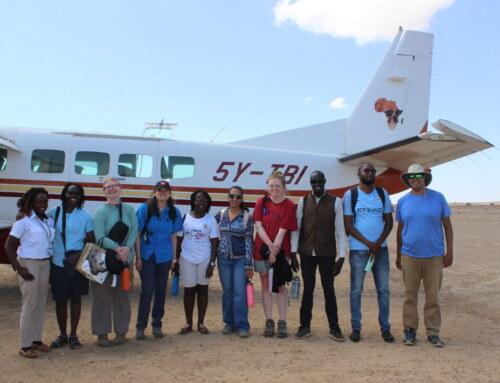by David Phillips
Head, School of Earth Sciences
The University of Melbourne
Ian McDougall, Emeritus Professor of geology at the Research School of Earth Sciences at the Australian National University, passed away on the 10th November this year (2018), after a long illness. His passing follows the sudden death last year of long-time colleague and collaborator, Professor Frank Brown, University of Utah.

Dr. Ian McDougall. Image credit: Pam McDougall.
Ian completed his PhD in 1960 at the University of Tasmania, before embarking on a, now legendary research career at the Australian National University. Ian’s research focussed on the K-Ar and 40Ar/39Ar dating methods, most notably applied to volcanic rocks. His early work involved K-Ar dating of basalts from Hawaiian volcanoes, where his exacting analytical approach revealed an age progression along the Hawaiian island chain, which confirmed the so-called hotspot model, an important component of Plate Tectonics theory. Ian’s work on K-Ar geochronology of volcanic rocks also contributed to the development of the well-known geomagnetic time scale. By this stage, Ian had already established an international reputation for unparalleled analytical quality and attention to detail, a reputation which has become his legacy. In this regard, Ian’s work will be remembered for setting the benchmark for scientific excellence in the field of K-Ar and 40Ar/39Ar geochronology.
Ian became involved in the dating of the volcanic successions in the Omo-Turkana Basin in 1978, following a high profile dispute on the age of the infamous KBS (Karen Behrensmeyer Site) tuff and associated hominin and faunal fossils. Ian succeeded in resolving these inconsistencies and went on to establish an extraordinary geochronological framework for the volcanic tuffs in the Basin. These ages have formed the basis for the interpretation of hominin evolution in the Basin, from the Miocene to the Pleistocene. Here, Ian’s contributions are best summarised in the words of Meave Leakey: “Without Ian’s input, we would have struggled to find meaning in the stratigraphy and dating of the Turkana sediments that hold such an important record of our past. We, and future generations will continue to benefit from his dedicated analyses and the resulting sound chronological sequence of the hominins, tools, and ancient faunas that we have recovered and continue to recover. Ian will always be remembered for his essential contributions over almost half a century of research”.





